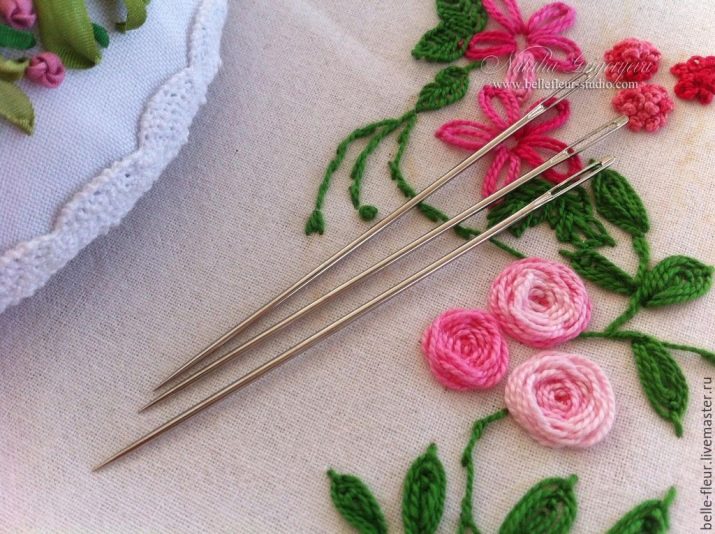What are the different embroidery needles and how to choose them?
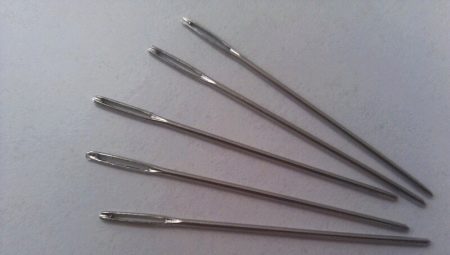
Needles are the thing that is literally in every home. They have been familiar to us since childhood, when mother or grandmother sewed holes in clothes. They still accompany us in everyday life. Such a little helper will be able to help out in difficult times and save you from an awkward situation.
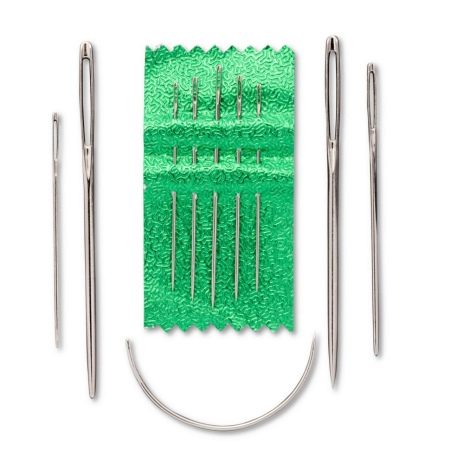
Peculiarities
However, not all of them are designed to sew pieces of fabric together or to close cuts in clothing. There are also needles for embroidery, they are very different from their more standard and familiar counterparts. Often, the features are the size of the eyelet, the length or thickness of the needle. These quirks vary from the purpose of a particular model.
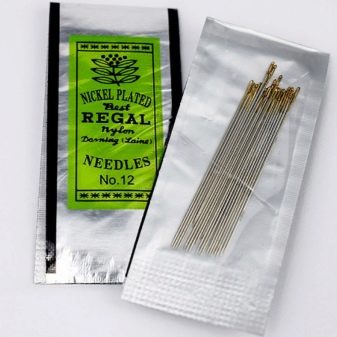
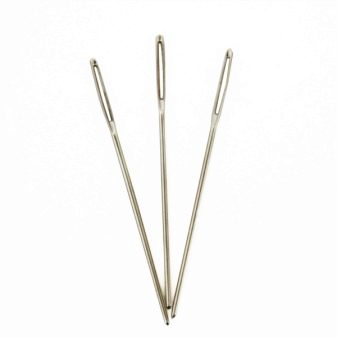
For example, those needles that are intended for embroidery with beads are thinner, with a small eye. Such miniature dimensions are necessary so that the beads can pass freely and not get stuck in any part of the instrument.
Thinner and smaller models are designed for soft and delicate fabrics. They will not be able to sew coarse and dense material, as they are likely to break. Thick ones, on the contrary, are just intended for such work. You can safely apply force to them due to the fact that they are resistant to mechanical stress and damage.
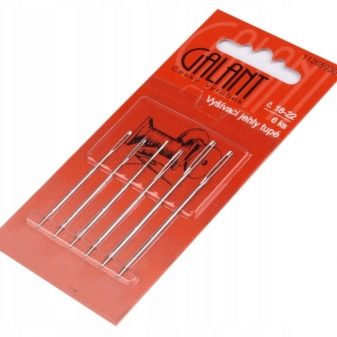
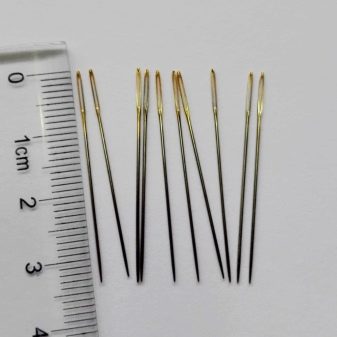
There are absolutely any needles for embroidery, it all depends on the material with which you are going to work.
Views
Universal
The needles of the universal category are used in most possible techniques: both for machine work and for embroidery with loops and satin stitch. They are the most common and popular in the household. The assortment includes the widest dimensional grid, which greatly simplifies the choice. It includes both thin and wide specimens. They are used for almost any type of fabric. Penetration is extremely high, so they can handle even fairly dense material.
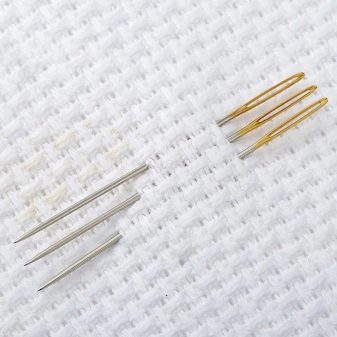
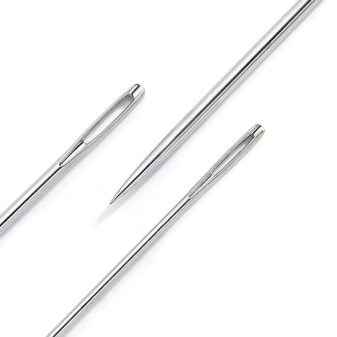
Tapestry
They are distinguished by a wide eyelet and a blunt tip. A special shape allows you to insert the required number of threads into it to create the pattern you need. They do well with fairly dense fabrics, but are completely unsuitable for thin materials. A blunt nose does not injure the fibers of the tissue, keeping it practically intact.
Plastic needles can also be referred to tapestries. They have a childish appearance, although they are fully functional. A plastic needle is used in embroidery for knitted items, as ordinary ones do not do this very well.
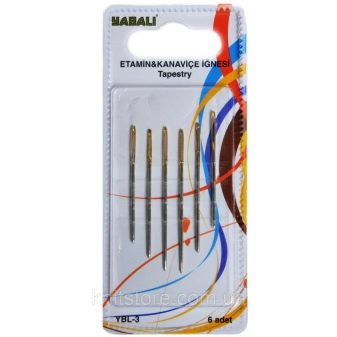
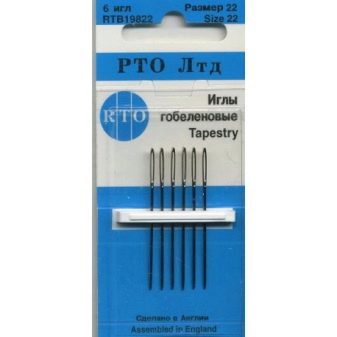
Beaded
These needles are specially designed for beading. Unlike other varieties, they have the same width, which allows them to interact more delicately with the beads.
Most often, counting numbers from No. 10 to No. 16 are used in beaded embroidery. These are the thinnest needles that are comfortable to work with.
It should also take into account the technique in which you work. Some types of embroidery may require a larger size, so before purchasing, carefully familiarize yourself with all possible nuances so as not to get into an uncomfortable position.
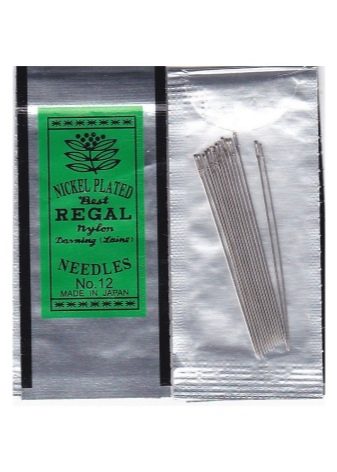
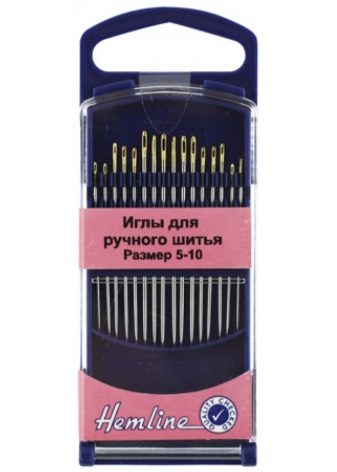
Bilateral
Such a needle is more automatic, but experience is required to use it. It is used on an embroidery machine when working with two hands, so its purpose is more factory-made. It is rarely used at home, since it is quite difficult for her to work. One of its main features is the eyelet in the middle of the needle.
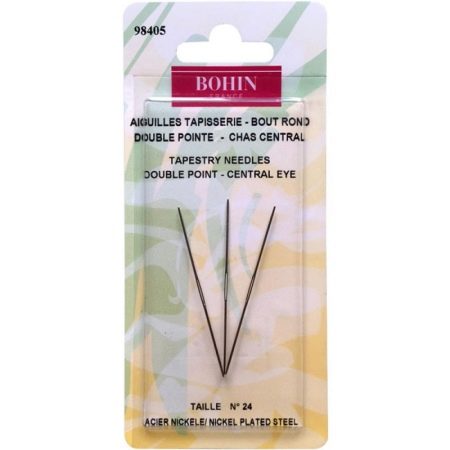
Chenille
These needles are distinguished by a wide eye and a sharp tip, they are intended for embroidery with ribbons, and are also suitable for working in volumetric technique. They have the largest hole of all possible types of needles, since with its help they can pass almost any tape through themselves. They are suitable for almost any type of fabric. For ribbon embroidery, models with two ears are often used for broader functionality.
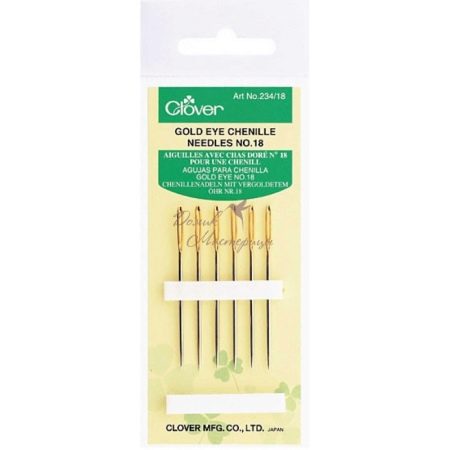
Dimensions (edit)
First of all, you need to determine the size of the tool you are going to work with. It can be difficult for a beginner to do this, but there are special tables that will help you figure it out.
Generally, the larger the needle number, the smaller the needle size. The smallest are bead embroidery needles. It is at this point that it is difficult to get confused. Most often, bead needles are preferred from No. 10.
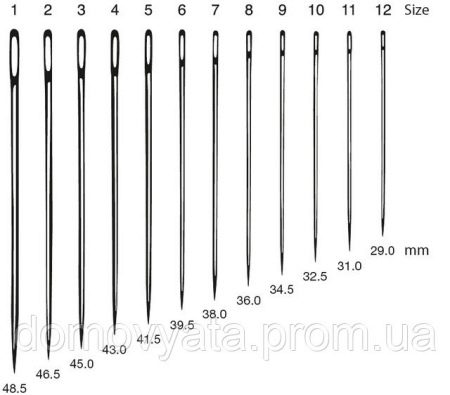
The main thing is not to forget that you should be comfortable working with the tool, so personal preferences should also be taken into account.
Top manufacturers
It is extremely important to decide on the choice of a good manufacturer. Product quality plays an important role in your result, so the choice should be taken seriously.
Japanese companies are very attentive to the process of creating their instruments. Oriental products are especially popular all over the world. As a rule, the prices for these products are more democratic, and the needles themselves are suitable for both beginners and professionals in their field. These manufacturers are new to the modern market, but they have already won the hearts of many craftsmen.
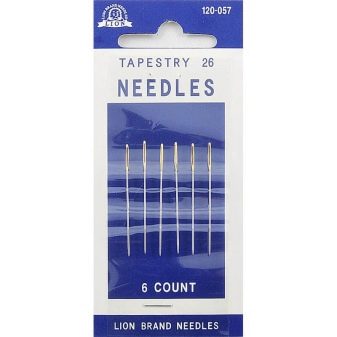

Czech manufacturers have been delighting embroiderers for several years with the quality of their needles. Such tools have passed the test of time, so they are highly trusted by buyers. Let the prices for this product be much higher, but the quality fully complies with all requirements and standards. That is why these needles will last you a long time.
The most popular are Gamma needles of domestic production and Indian Pony needles. They are sturdy, durable, have a gold-colored eyelet and slip easily through fabric.
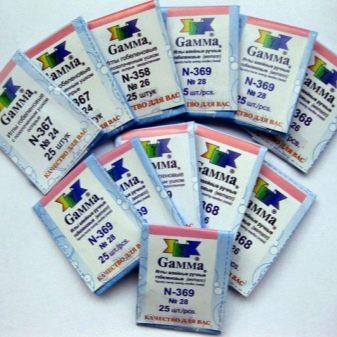
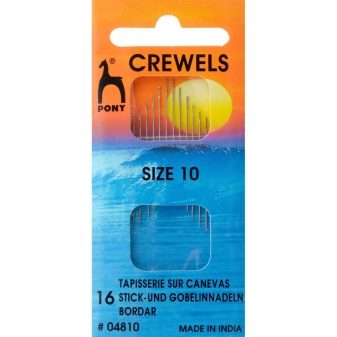
Nuances of choice
The choice of the right tool should be approached responsibly. It is often the quality of the needle you use that plays the most important role in the final result.
First of all, it is worth deciding on the technique in which you are going to work. Based on the technology you have chosen, you should select the tool, since the needle designed for embroidery with ribbons will not work for beads.
After that, you need to outline the front of future work. If you have to perform a large volume, then you should give preference to stronger and higher quality models.

First select the fabric you will be embroidering on. The needle should calmly pass through it, while not leaving damage on it. Particular attention should be paid to the canvas. The denser it is, the thinner the needle should be, as it will not leave holes in the fabric.
Take a closer look at the quality of the tool. It should be completely smooth, without gaps and unevenness.
Do not confuse sewing needles with embroidery needles, otherwise you will not be very satisfied with the result of your labors.
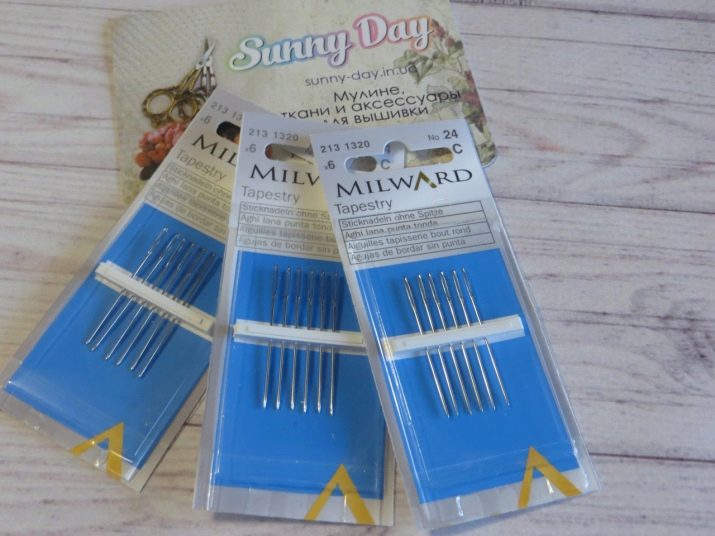
Usage Tips
It is best to store needles in one place so that later you do not have to search for them throughout the house. A needle bed is used as a convenient storage. It will make the embroidery process easier, and you will always be aware of where your tools are.
Needles should be used very carefully. There is a high risk of injury to yourself, so it is recommended to use thimbles. They will keep your fingers intact.
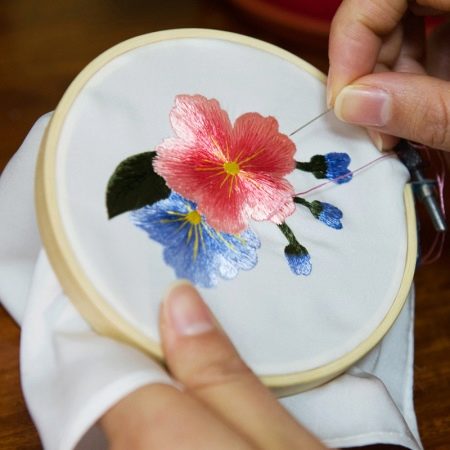
Handle the instrument with care. The needles are extremely fragile, so they can be easily broken to prevent this from happening, they must be treated with care.
Do not leave the tool on the sofa or chair while working. In an unfortunate combination of circumstances, you or your household may sit on it. The consequences of this can be very different, but spending your day in the hospital will not be the best prospect, so safety precautions should not be forgotten during the creative process.
